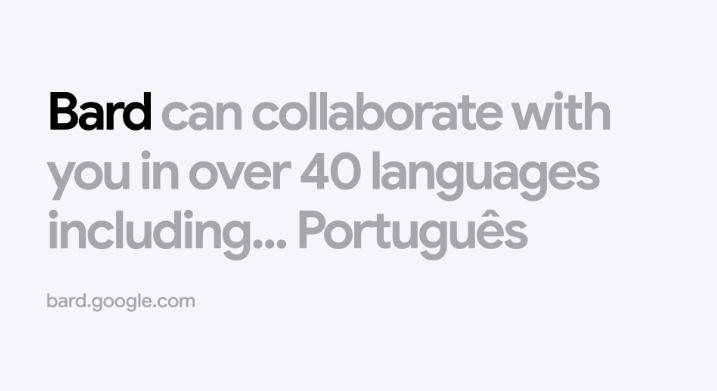Google's AI chatbot, Bard, is now offering its services in more than 40 languages, extending its reach to various regions worldwide.
This major update brings new features that allow users to customize their experience, enhance their creativity, and be more productive while maintaining a responsible approach to artificial intelligence (AI).
In a blog post on Thursday, Bard's product lead Jack Krawczyk, and Bard's VP of engineering Amarnag Subramanya, highlighted the company's commitment to engaging with experts, policymakers, and privacy regulators to ensure the responsible implementation of AI technology.
They emphasized that Google will adhere to its AI Principles, consider user feedback, and prioritize protecting privacy and data as they continue expanding Bard to new regions and languages.

Google's AI Chatbot Bard Customization Options
To better suit users' needs, Bard now offers enhanced customization options. Users can listen to Bard's responses, allowing for a different perspective or enabling the correct pronunciation of a word. This feature supports over 40 languages.
Additionally, users can adjust the tone and style of Bard's responses, choosing from options such as simple, long, short, professional, or casual. Although this feature is currently available in English, Google plans to expand it to other languages.
Google also aims to boost productivity by introducing four new features. Users can now have the ability to pin and rename conversations with Bard, making it easier to revisit previous prompts and retrieve valuable information.
The export code feature allows users to export Python code to Replit and Google Colab, catering to the growing interest in using Bard for coding tasks. Moreover, users can share part or all of their Bard chat with others through shareable links, facilitating collaboration and idea sharing.
Finally, users can now upload images with prompts, leveraging the capabilities of Google Lens to gain additional information or generate creative captions.
Read Also : Google I/O 2023: Pixel Fold Debuts, Features Thinnest Body and Biggest Battery Among the Competition
Google Bard's Mathematical Skills
In previous news, Google claimed that its Bard was making significant strides in mathematical tasks, coding questions, and string manipulation.
Bard also introduced a new feature that allows users to export tables directly to Google Sheets, enhancing its utility for data management.
By implementing a technique known as "implicit code execution," Bard can now also detect computational prompts and execute code in the background, resulting in more accurate responses to mathematical tasks, coding queries, and string manipulation prompts.
Hence, users can anticipate enhanced answers to questions involving prime factors, growth rates, and word reversals. Google's latest announcement is part of the larger AI race between major tech companies.
Albeit years in the making, Generative AI gained significant steam in 2022 with the introduction of OpenAI's viral chatbot ChatGPT. Google has since followed suit with Bard to keep up with the race.
Related Article : Microsoft Bing ChatGPT vs. Google Bard: Redmond Event Announced Minutes After Google's AI Reveal

ⓒ 2025 TECHTIMES.com All rights reserved. Do not reproduce without permission.




